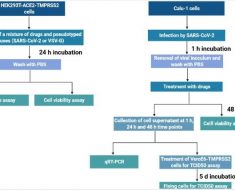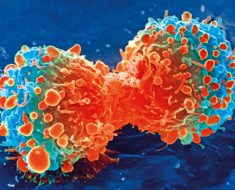Editor’s note: Find the latest COVID-19 news and guidance in Medscape’s Coronavirus Resource Center.
The current COVID-19 wave due to the Omicron variant appears to be peaking nationally in the U.S., Anthony Fauci, MD, director of the National Institute of Allergy and Infectious Diseases, said Sunday.
Overall, “things are looking good,” he said on ABC’s This Week, expressing cautious optimism.
“We don’t want to get overconfident,” he said. “But they look like they’re going in the right direction right now.”
The number of coronavirus cases in the U.S. could fall to manageable levels in the coming weeks. Within a month or so, the level of infection could drop to an “area of control,” Fauci said. Infections will continue, but they could be much fewer and less severe.
“They’re there, but they don’t disrupt society,” he said. “That’s the best-case scenario.”
South Africa, Israel, and the U.K. have reported declines in Omicron cases in recent weeks. New cases appear to be dropping in the U.S., particularly in the Northeast, New England, and Upper Midwest states. Cases are still increasing in some Southern and Western states.
“But if the pattern follows the trend that we’re seeing in other places, such as the Northeast, I believe that you will start to see a turnaround throughout the entire country,” Fauci said.
The U.S. is reporting an average of 700,000 new cases daily, according to the latest data from The New York Times. The average has dropped from more than 800,000 daily cases in early January.
Hospitalizations are averaging around 160,000 daily, the newspaper reported, which is a record and an increase of about 25% over the last 2 weeks. More than 2,100 new deaths are being reported each day, which is up 40%.
“There may be a bit more pain and suffering with hospitalizations in those areas of the country that have not been fully vaccinated or have not gotten boosters,” Fauci said.
Hospitals in several parts of the country are straining to keep up due to staffing shortages and exhaustion from previous pandemic surges. In Mississippi, for instance, nearly all the state’s acute-care hospitals have reached capacity, according to the Times.
The U.S. should still stay alert for the “worst-case scenario,” Fauci said, such as a new variant that is highly contagious or causes severe disease.
“I’m not saying it’s going to happen, but we have to be prepared,” he said.
That means getting more people vaccinated, increasing the supplies of COVID-19 treatments, and stocking up on tests and masks.
“If we have those things in place — vaccines, testing, masks, therapy — we could keep it at that low level,” he said. “That would be the best-case scenario.”
It’s too early to tell whether Americans will need a fourth vaccine shot, Fauci said. About 80% of people ages 5 and older who are eligible have received at least one vaccine dose, and 67% are considered fully vaccinated, according to the latest CDC data. About 43% of adults have received a booster shot.
“We do know — and these are the recent data that have come out from the CDC — that, even with Omicron, boosting makes a major, major difference in protecting you from hospitalization and severe outcomes,” he said.
Sources
ABC News: “‘This Week’ Transcript 1-23-22: Sen. Chris Coons, Sen. Joni Ernst & Dr. Anthony Fauci.”
The New York Times: “Fauci cautions against overconfidence but says the U.S. wave looks like it’s ‘going in the right direction.'”
CDC: “COVID-19 Vaccinations in the United States.”
Source: Read Full Article





